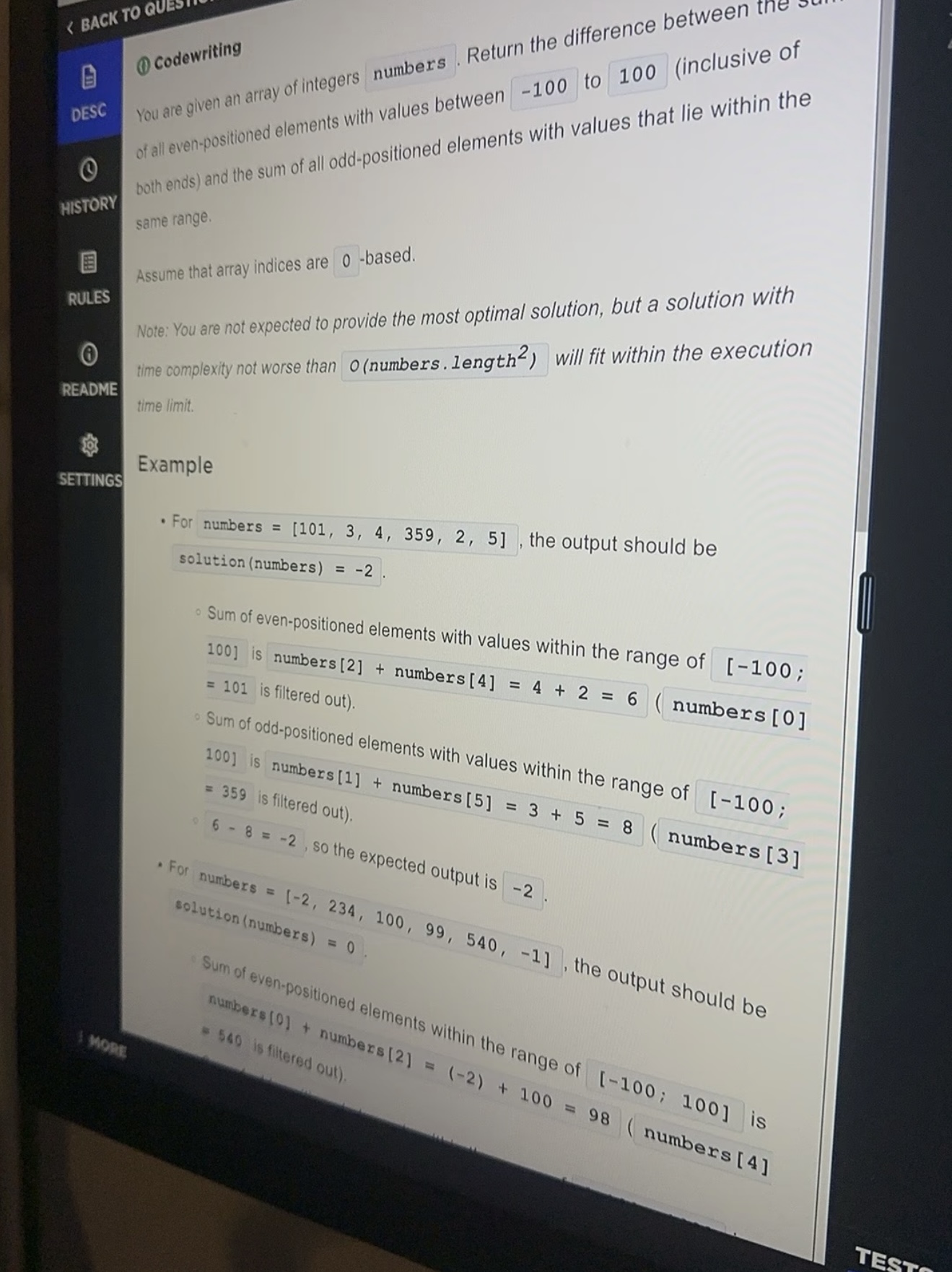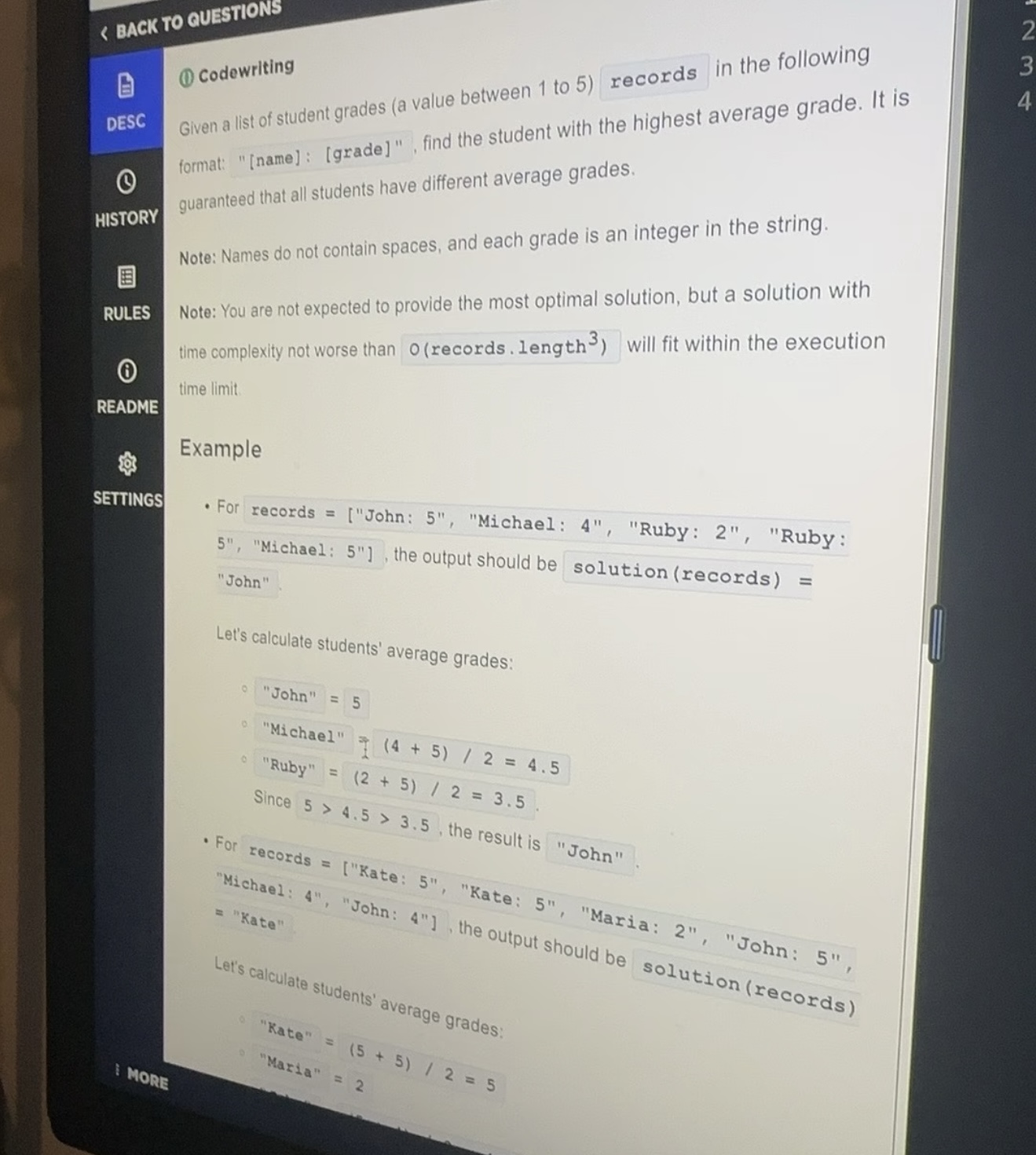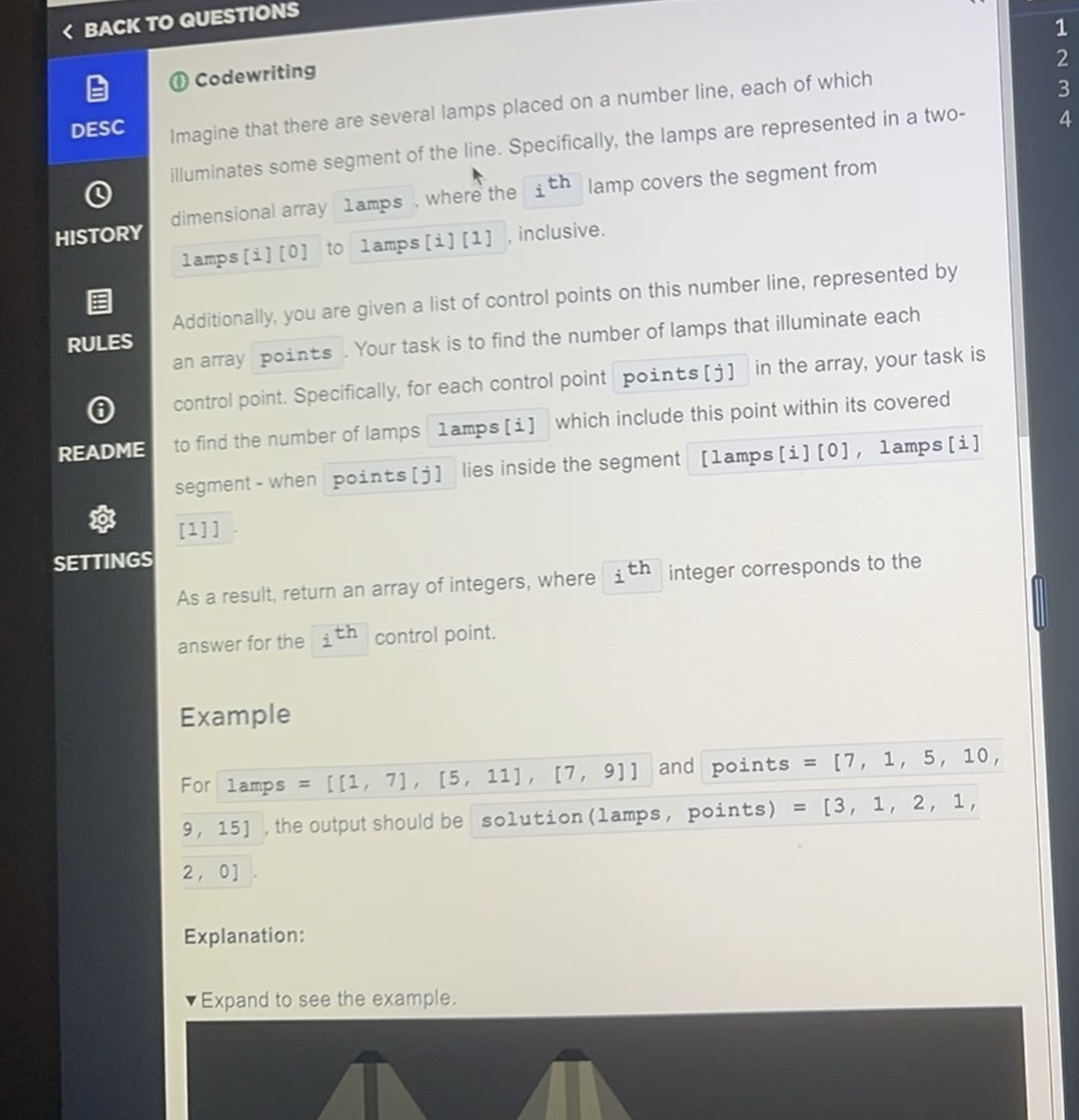How I Cracked ZipRecruiter CodeSignal OA Questions in 2025

ZipRecruiter CodeSignal OA Questions
The ZipRecruiter OA was done on CodeSignal. There were four questions in total, ranging from easy to medium difficulty, and 120 minutes were given to complete them. The time was more than enough, I actually finished in 70 minutes.
I am really grateful for the tool Linkjob.ai, and that's also why I'm sharing my entire OA interview experience here. Having an invisible AI assistant during the interview is indeed very convenient.
Next, I will share the actual questions from my OA and the step-by-step methods I used to solve them.
Task 1: Frame Sum and Distinct Sum in a Matrix

Step-by-Step Solution:
Step 1: Iterate over all frameSize × frameSize square submatrices
Determine the valid starting row and column indices for each submatrix. For a matrix with R rows and C columns, the starting row i ranges from 0 ≤ i ≤ R - frameSize, and the starting column j ranges from 0 ≤ j ≤ C - frameSize.
Step 2: Calculate the sum of each submatrix frame
Depending on the frameSize, compute the frame sum as follows:
When frameSize == 1, the sum is simply the value of that single element.
When frameSize > 1, the frame includes all elements on the top boundary (row i, columns j to j + frameSize - 1), bottom boundary (row i + frameSize - 1, columns j to j + frameSize - 1), left boundary (rows i + 1 to i + frameSize - 2, column j), and right boundary (rows i + 1 to i + frameSize - 2, column j + frameSize - 1).
Step 3: Find the maximum sum
Iterate through all frame sums and record the maximum value.
Step 4: Collect distinct elements from all frames with the maximum sum and calculate their sum
For all frames whose sum equals the maximum, add the elements to a set (to remove duplicates automatically), then calculate the sum of the elements in the set.
Task 2: Difference Between Sums at Even and Odd Indices

Step-by-Step Solution:
Step 1: Calculate sums for even and odd indices separately
Iterate through the array. For each element:
If the index is even (0-based) and the element value is within [-100, 100], add it to the even index sum.
If the index is odd and the element value is within [-100, 100], add it to the odd index sum.
Step 2: Compute the difference
Subtract the odd index sum from the even index sum and return the result.

Task 3: Student with the Highest Average Score

Step-by-Step Solution:
Step 1: Track total scores and counts for each student
Iterate through the list of records. For each record (e.g., "John: 5"), split the name and score, converting the score to an integer. Maintain a dictionary for each student to store the total score and count of scores.
Step 2: Calculate the average score for each student
Iterate through the dictionary and compute the average for each student (total score ÷ count).
Step 3: Identify the student with the highest average
Iterate through the dictionary, compare averages, and find the student with the maximum average score.
Task 4: Count of Control Points Illuminated by Lamps

Step-by-Step Solution:
Step 1: Iterate through each control point
For each control point points[j], initialize a counter to 0.
Step 2: Check whether each lamp covers the control point
For each lamp lamps[i], if lamps[i][0] ≤ points[j] ≤ lamps[i][1], increment the counter by 1.
Step 3: Record the result
Store the counter value for each control point in a result array, then return the array.
ZipRecruiter CodeSignal OA Format and Experience
In ZipRecruiter’s CodeSignal OA, question types and time management were key.
Question Types
The problems I encountered closely reflected real-world programming logic. There were matrix operations, like summing and deduplicating sub-frames; array operations, such as calculating the difference between sums of elements at even and odd positions; string processing, like computing students’ highest average scores; and interval coverage problems, such as counting how many control points are illuminated by lamps. None of these required obscure knowledge, they tested the ability to translate problem conditions into code logic. Edge cases needed particular attention, for example handling frameSize = 1 in matrix problems, which could easily lead to mistakes if overlooked.
Time Management
I spent a total of 70 minutes completing all the problems, which was plenty of time. My strategy was to quickly skim all the questions first, gauge their difficulty, and start with the easiest ones, like the array sum difference problem. Its logic was simple, and finishing it quickly helped build confidence. For more step-heavy problems, like the matrix question, I slowed down to carefully go through each sub-step, ensuring every part was correct. While coding each problem, I tested multiple examples, especially edge cases such as empty arrays or single-element arrays, to avoid losing points on simple mistakes. Overall, I focused on steady, careful progress without rushing, and the time was more than enough.
Simple Tricks for ZipRecruiter CodeSignal OA
Test Day Insights
Test day was intense, but I stuck to my plan. I quickly skimmed all four questions to spot the easiest one and always started with the one I felt most confident about. I worked in the built-in CodeSignal editor, but I also pasted my code into a local editor to catch any silly mistakes. I kept an eye on the clock without rushing through the test cases and made sure to handle edge cases, like empty arrays or single-element inputs.
Arrays Shortcut
When I see an array problem on the test, I always look for a shortcut. I try to avoid nested loops because they slow me down. One trick that works for many ZipRecruiter CodeSignal questions is using a hash set. Let me walk you through my process:
I read the problem and check if I need to find common elements or duplicates.
I store all elements from the first array in a hash set. This lets me check for matches quickly.
I loop through the second array. For each element, I check if it is in the hash set.
If I find a match, I add it to my result.
This method gives me a time complexity of O(n), which is much faster than using two loops. Here’s a quick code example:
def find_common_elements(arr1, arr2):
seen = set(arr1)
result = []
for num in arr2:
if num in seen:
result.append(num)
return resultGame Strategy Hack
I break each problem into small steps and ask myself, “What’s the best move right now?” For most of these problems, I rely on a greedy approach.
I look for the move that gives me the biggest immediate advantage and consider whether it puts my opponent at a disadvantage. I repeat this process until the game is over.
For example, if a question asks who will win a game where players take turns picking numbers, I simulate both players’ choices. I use a table to track all possible outcomes and see how each move affects the game.
Move | My Score | Opponent Score |
|---|---|---|
Pick left | +current | -future |
Pick right | +current | -future |
I pick the move that gives me the highest score difference. This greedy method works for many ziprecruiter codesignal questions about games.
Note: If you get stuck, try to write out a few moves by hand. Patterns often appear after a few rounds.
Speed Optimization
Speed matters a lot on the test. I use a few tricks to move faster:
I set a timer for each question. This keeps me from spending too long on one problem.
I write helper functions for repeated tasks, like checking if an array is sorted.
I use keyboard shortcuts in the CodeSignal editor to save time.
When I practice, I focus on typing less and thinking more. I avoid rewriting code if I can copy and tweak it. Here’s a quick checklist I follow:
Read the question twice
Plan my approach
Write code in small chunks
Test with sample inputs
Problem-Solving Framework
I always use the same framework for every problem. This keeps me calm and focused. Here’s my step-by-step process:
Understand the Problem: I read the question carefully and underline key points.
Plan the Solution: I sketch out my approach.
Write the Code: I start with a simple version, then add details.
Test Edge Cases: I check for empty arrays, single elements, and large inputs.
Optimize: I look for ways to make my code faster or cleaner.
This framework works for all ziprecruiter codesignal questions.
ZipRecruiter OA Actionable Checklist
Practice Routine and Preparation Steps
I kicked off my prep by listing the most common topics. Arrays, strings, and basic game strategies kept appearing in practice tests. I set a daily goal: solve at least three medium-level LeetCode problems every day, using a timer for each one to get used to the pressure. Right after solving each problem, I went over my mistakes and noted any quick tricks or patterns I spotted in a notebook for easy reference later.
Applying Tricks
During practice, I always try to apply my favorite tricks. I use hash sets for quick lookups in arrays and rely on sliding window or two-pointer techniques whenever they fit. For game strategy questions, I break them down into small steps and use a greedy approach. I also make it a habit to test my code with sample inputs before moving on.
Here’s a quick table of tricks I use most often:
Trick | When I Use It | Why It Works |
|---|---|---|
Hash Set | Array problems | Fast lookups |
Sliding Window | Subarray questions | Saves time |
Two Pointers | String/array tasks | Clean code |
Greedy Logic | Game strategies | Simple choices |
FAQ
How many points were there in total for the four questions? How many points did you need to pass?
These four questions are worth 300 points in total. I had to get every point to pass the OA and move on to the VO round.
Are there any hidden traps in the ZipRecruiter CodeSignal OA that I should watch out for?
Yes! The biggest traps usually hide in the edge cases. For example, handling the special case when frameSize = 1 in the matrix problem, dealing with empty arrays, or making sure you correctly include endpoints in interval problems.
Is the CodeSignal coding environment easy to use?
It’s actually quite user-friendly: syntax highlighting and error messages are clear. Still, it’s worth doing a few practice problems on CodeSignal beforehand so you don’t lose time figuring things out during the test.

